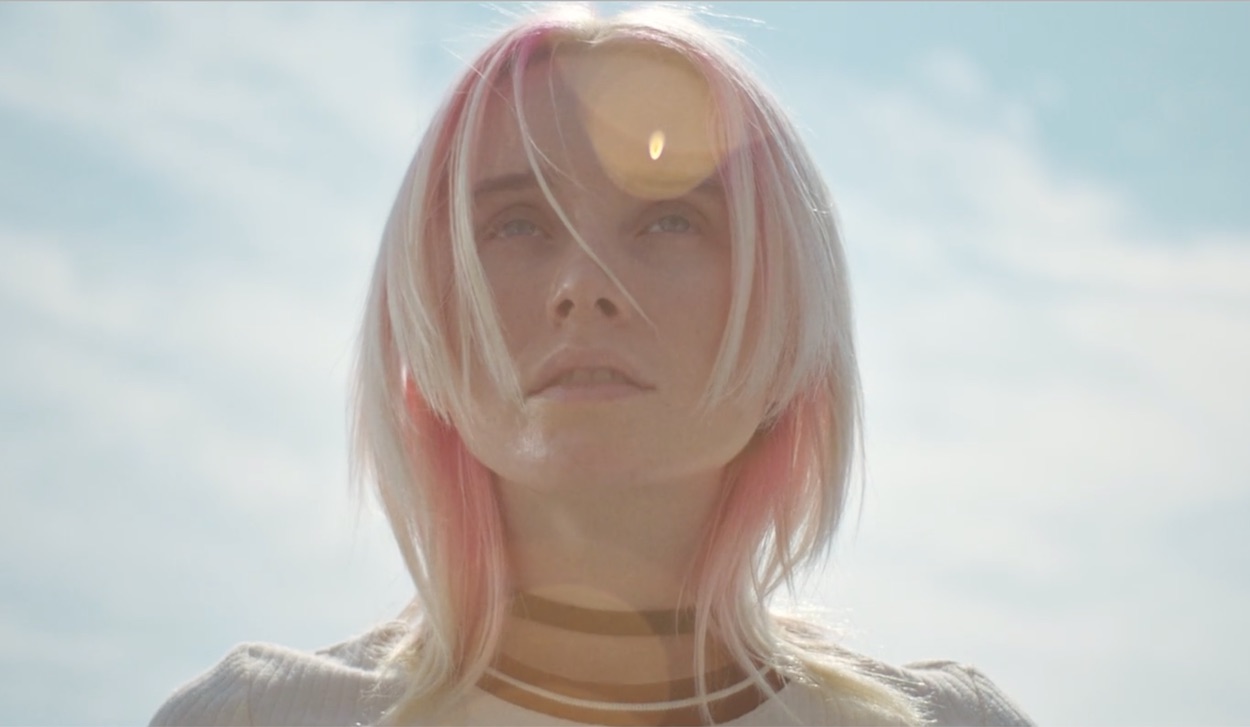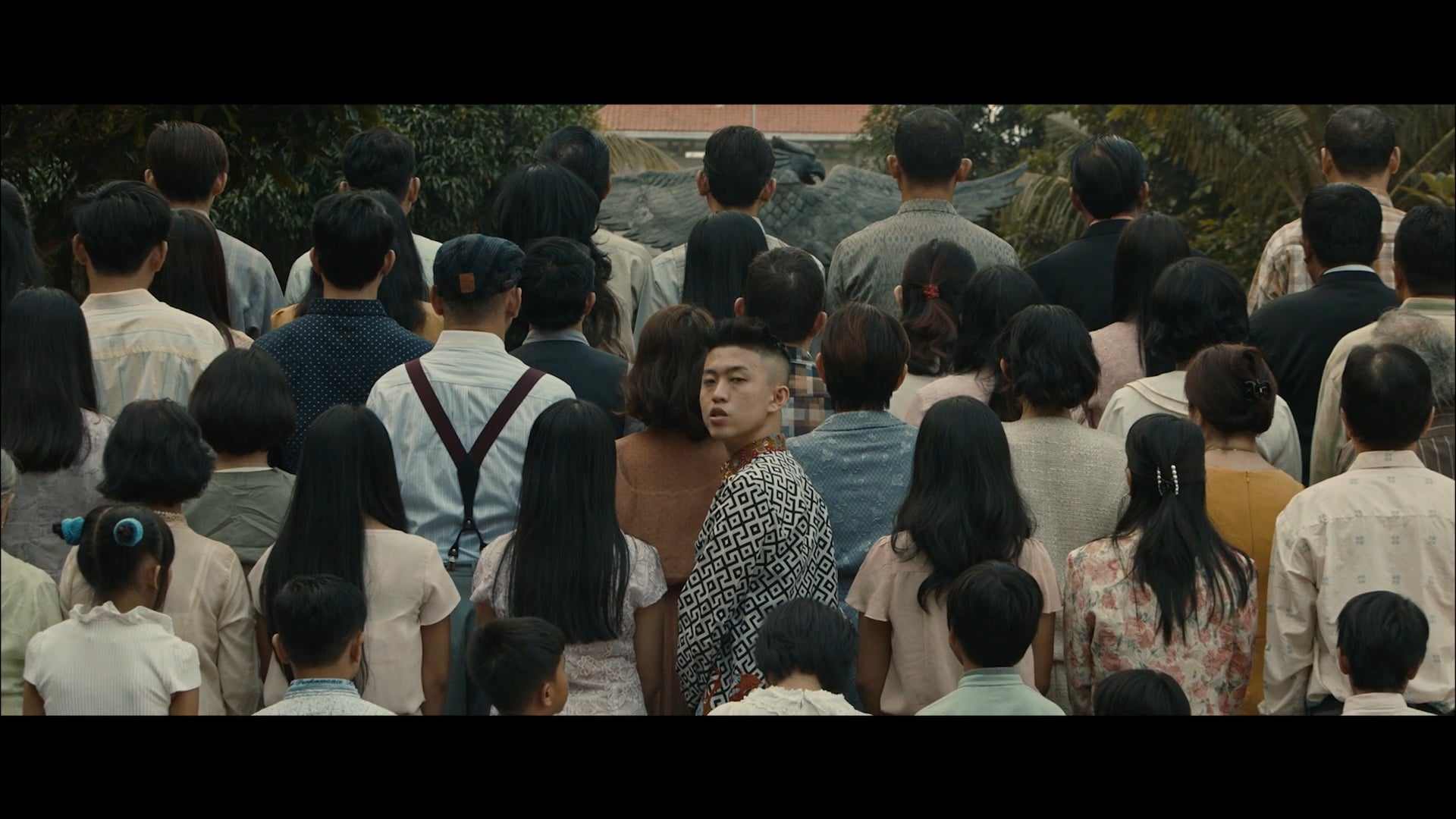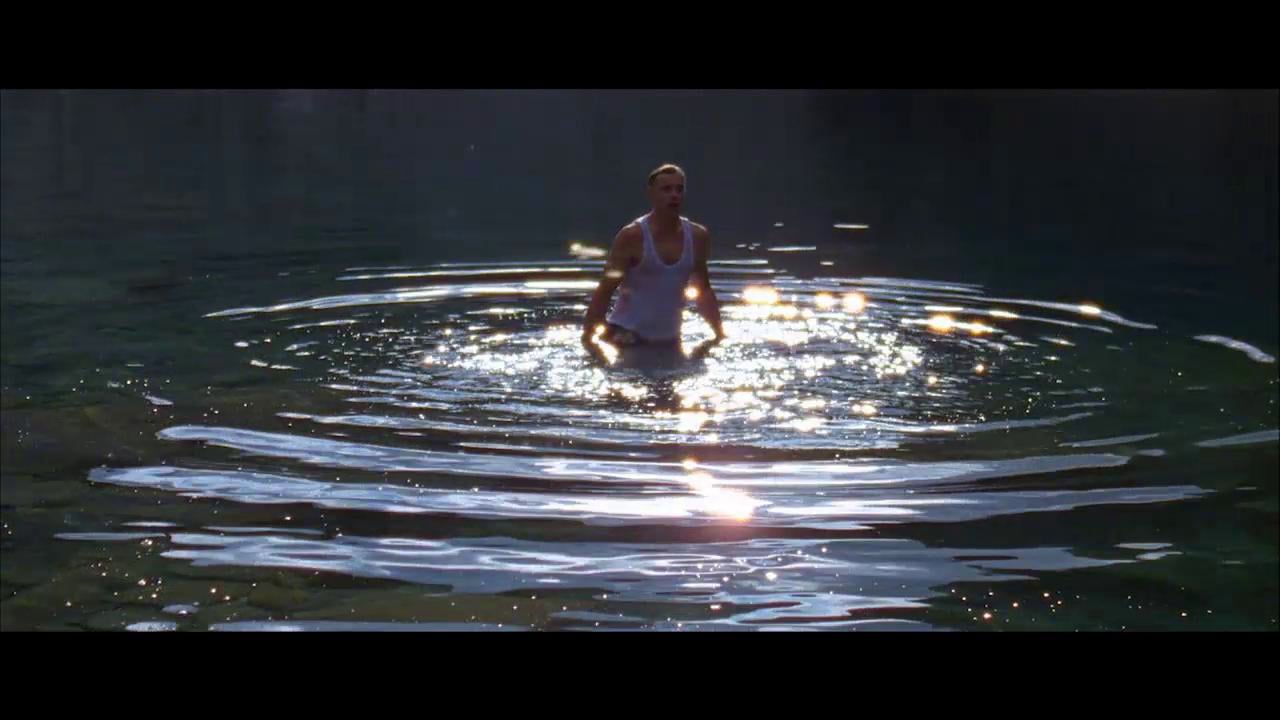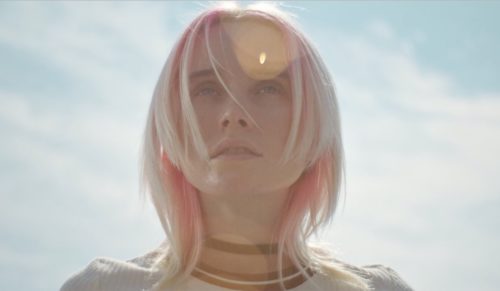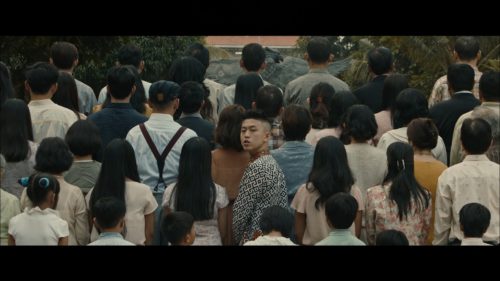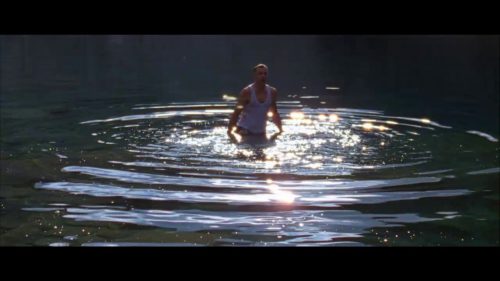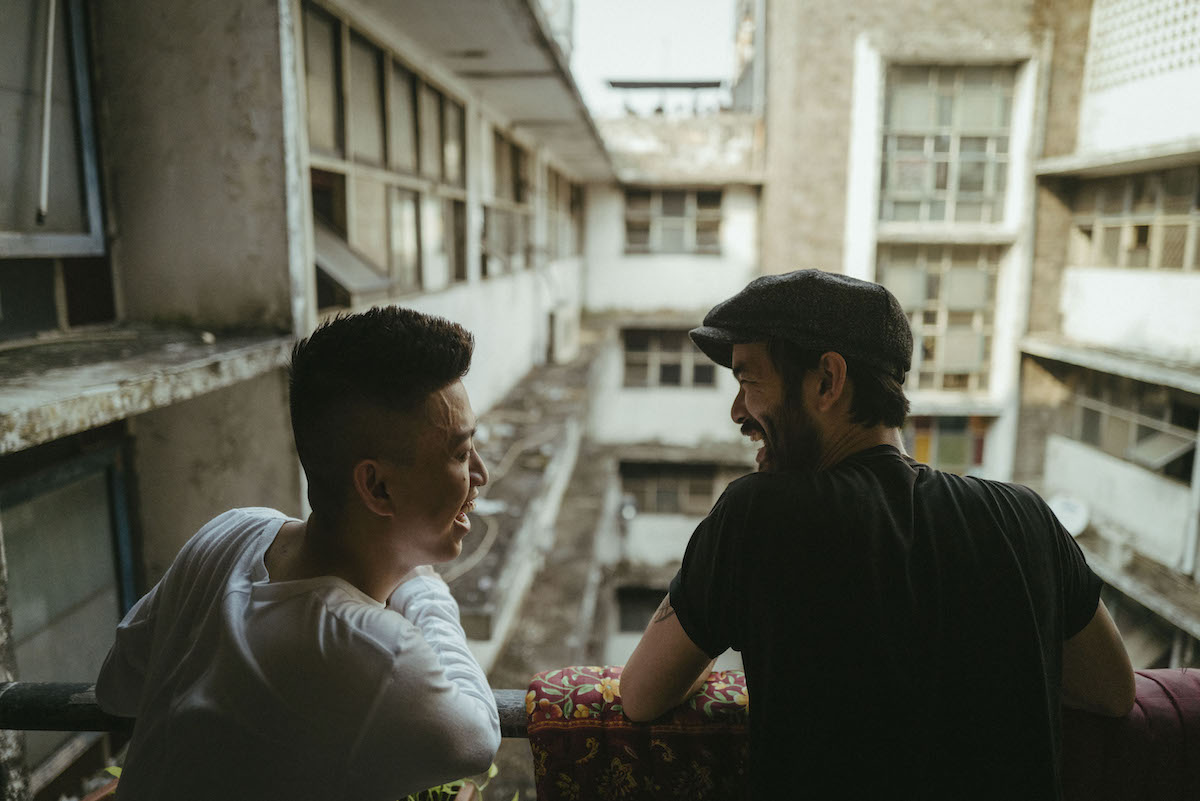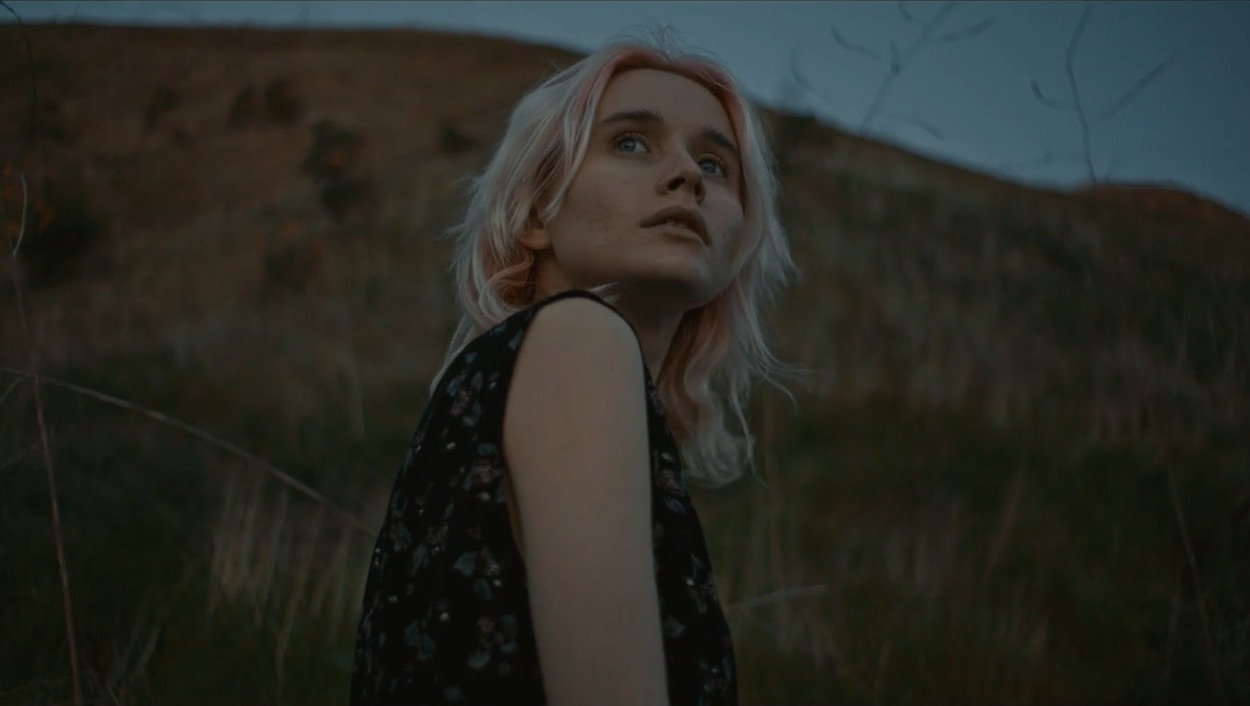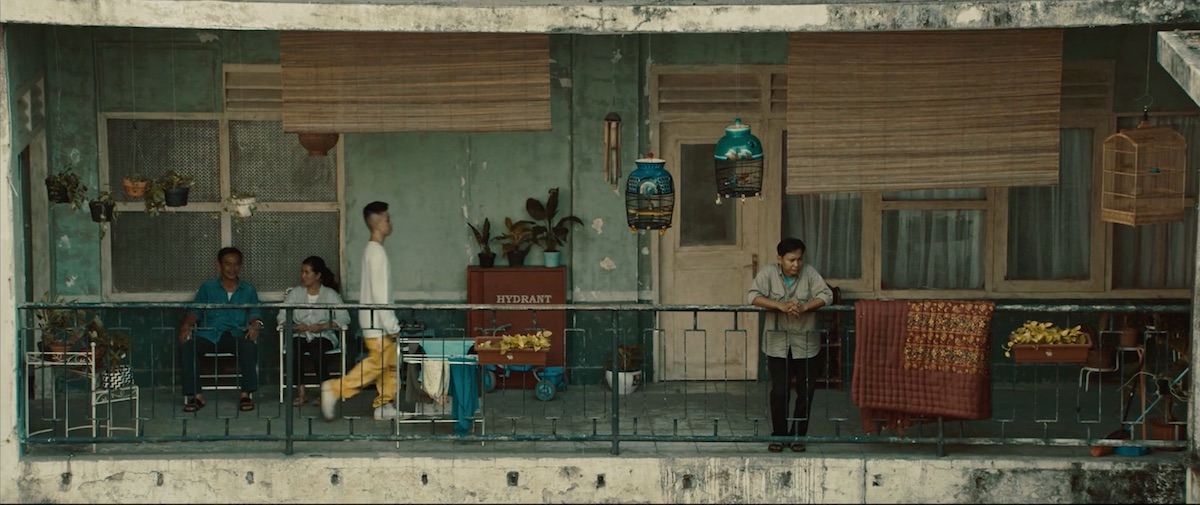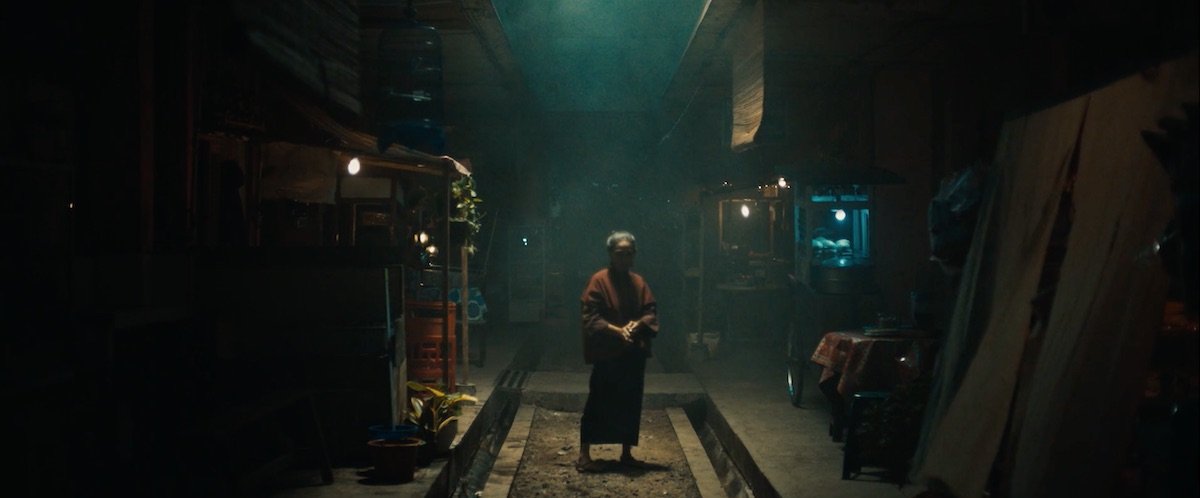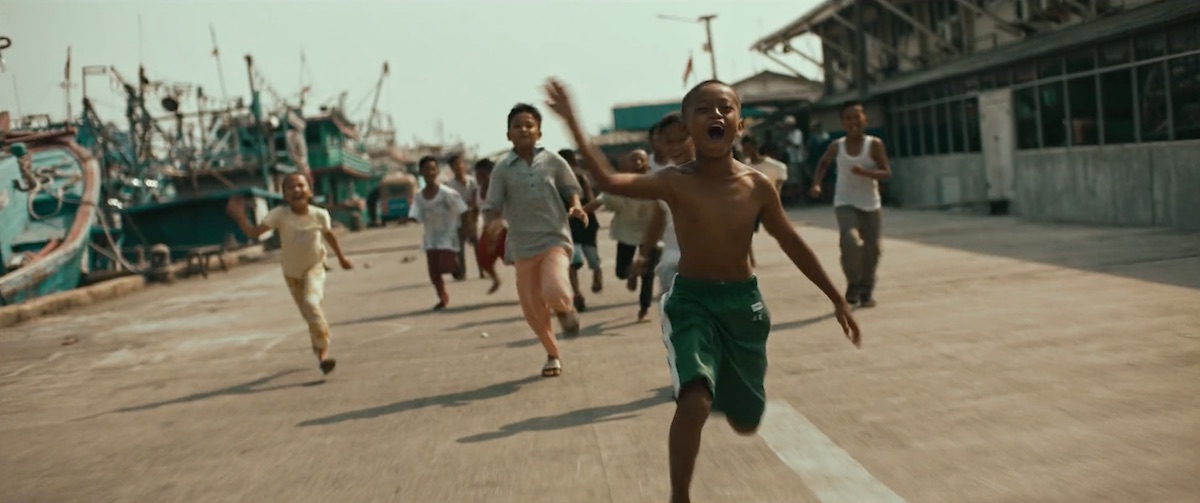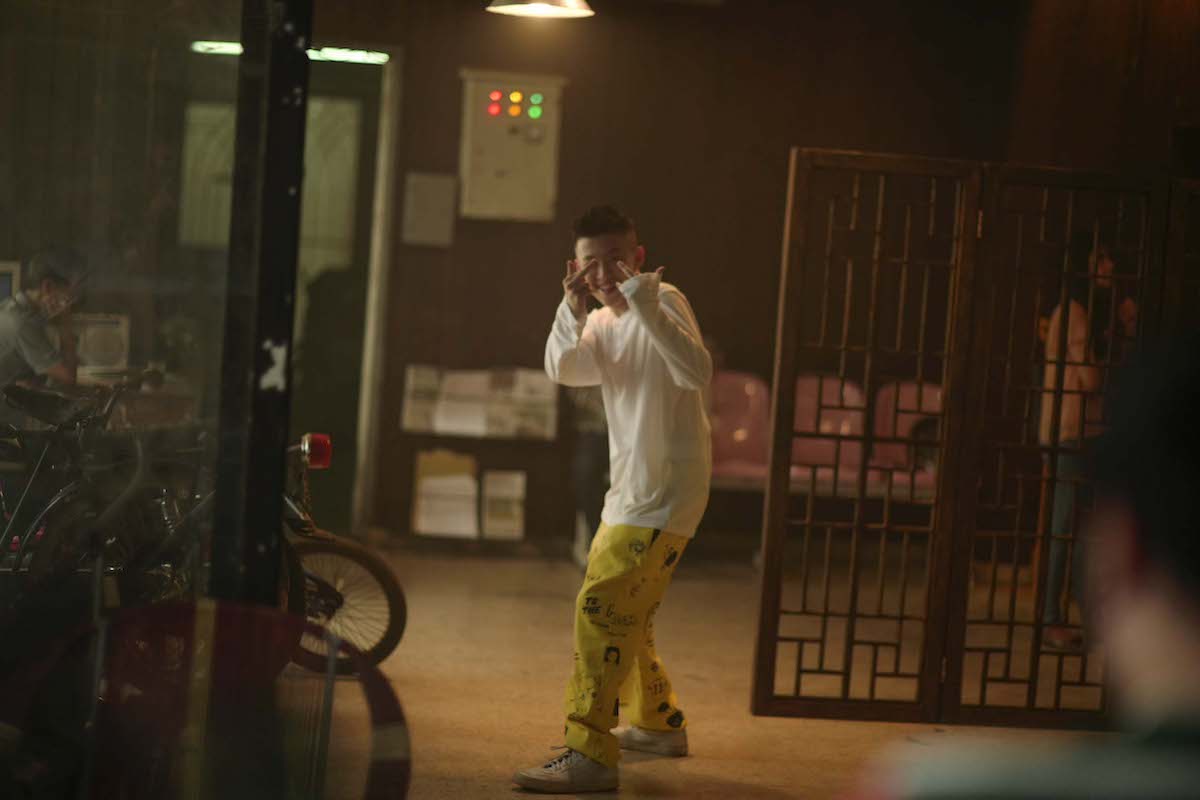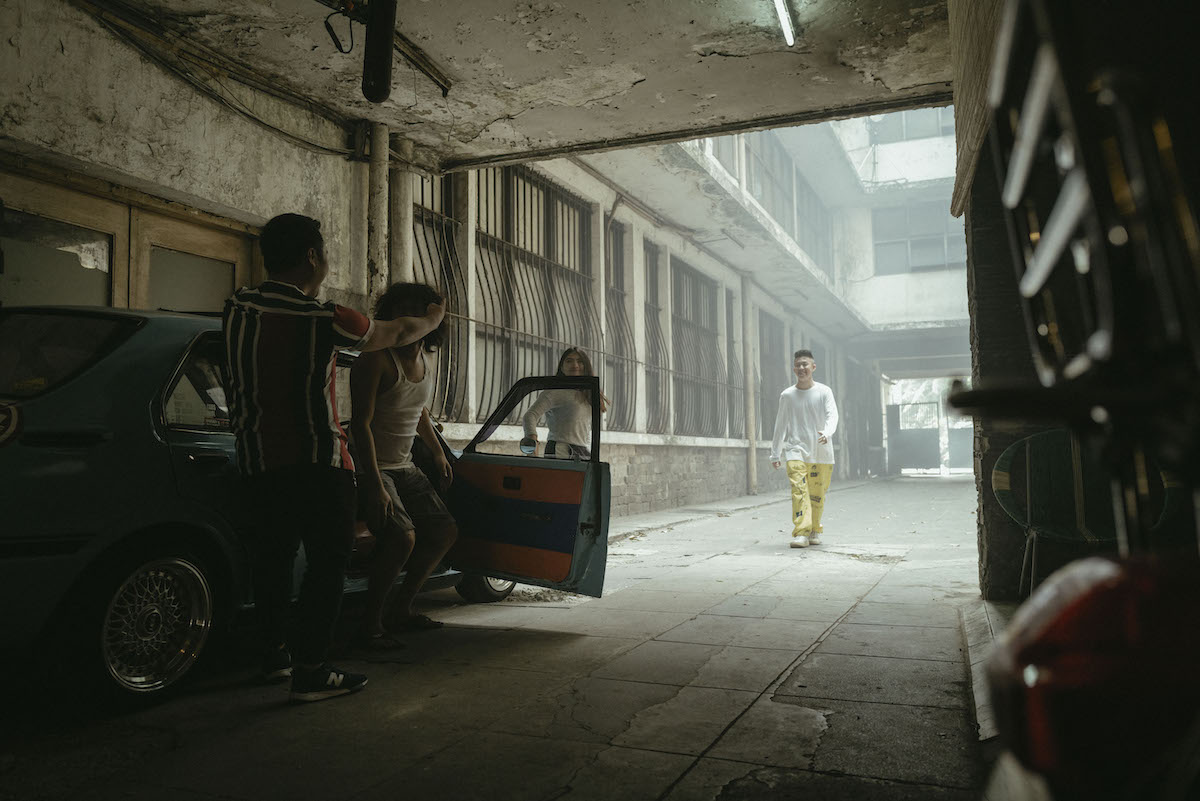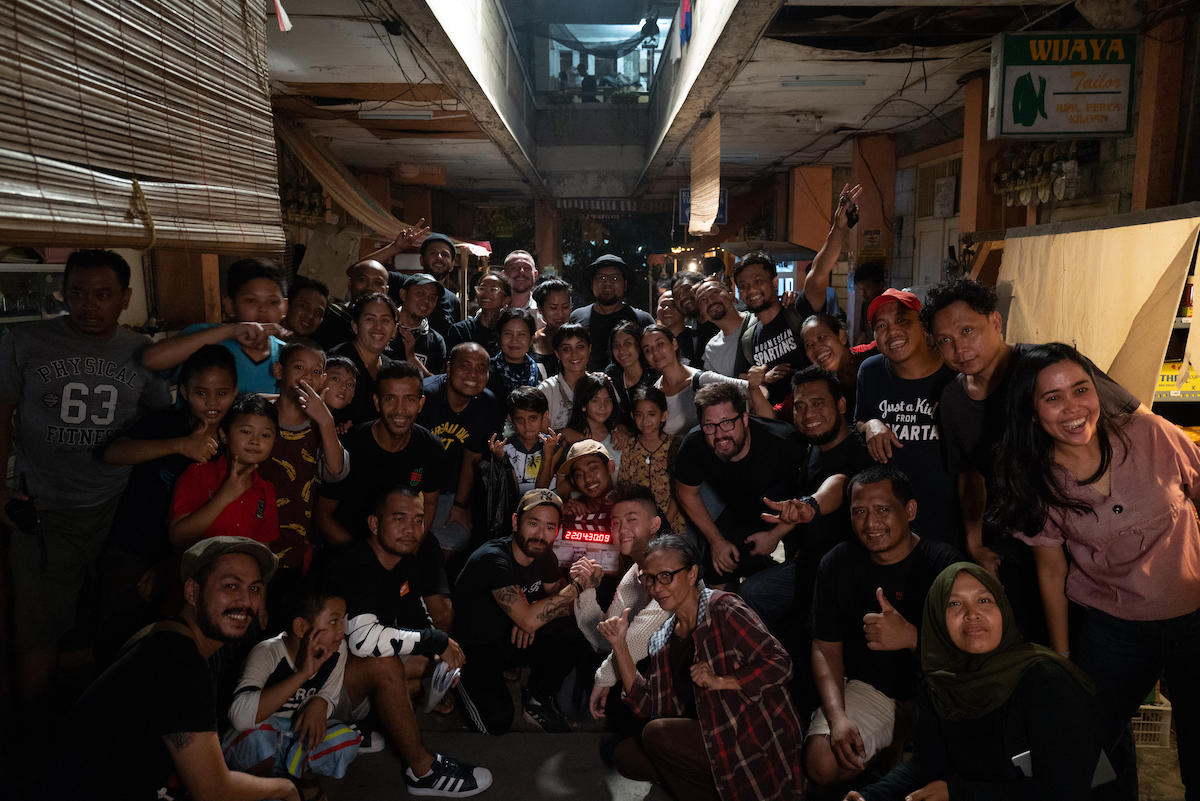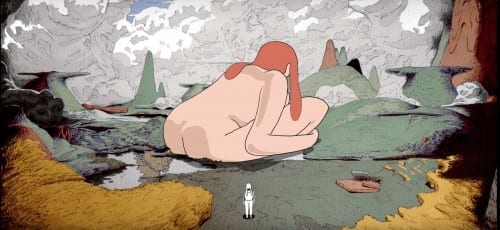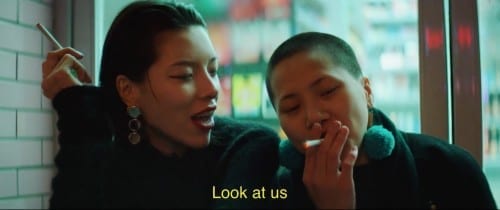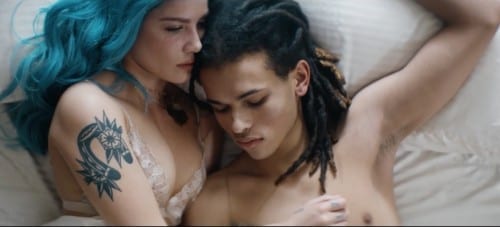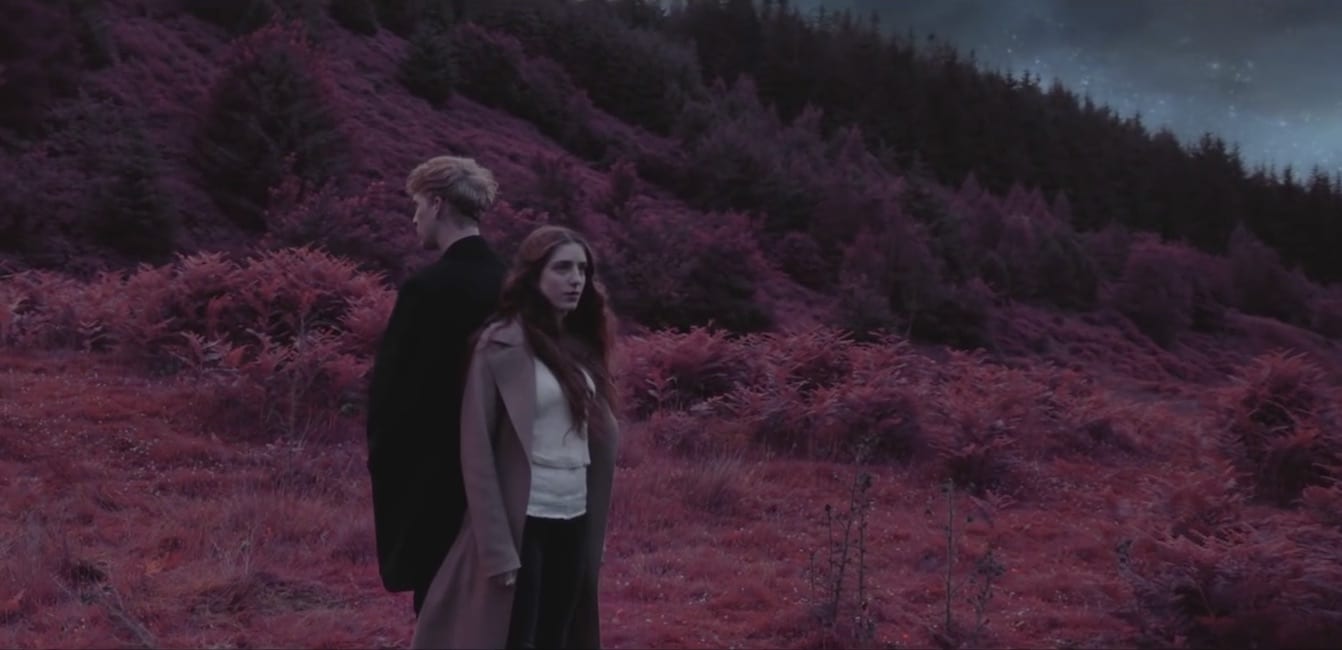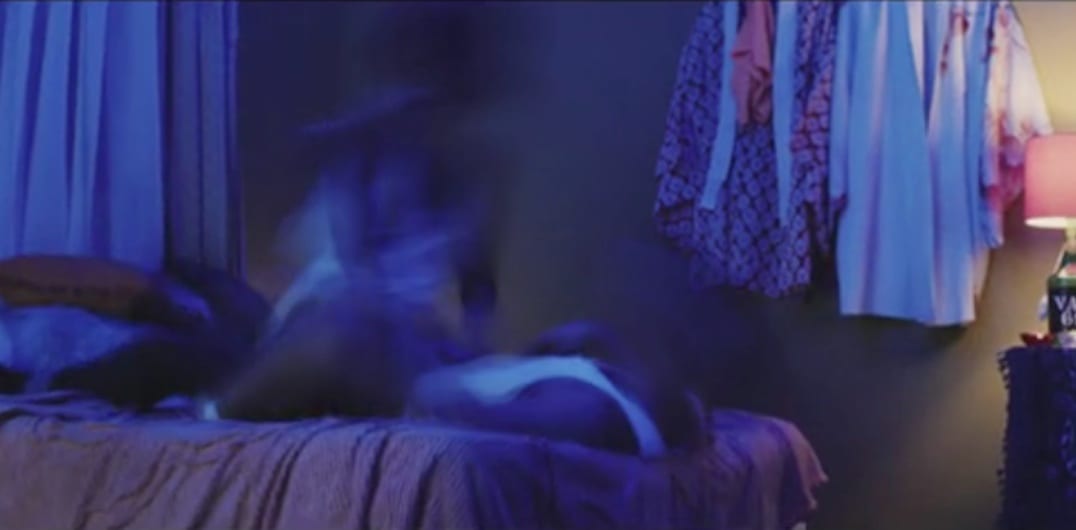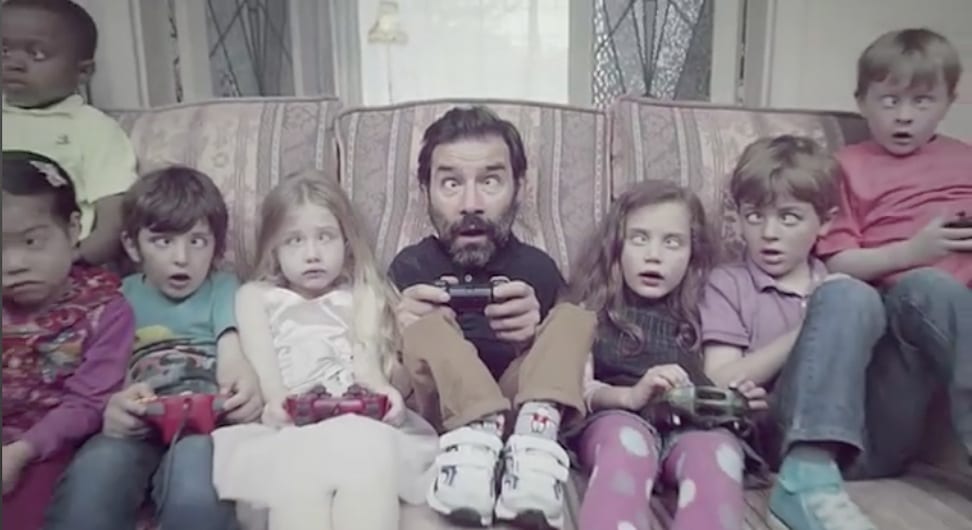Rich Brian and Sing J. Lee, right, on set for the Indonesian artist’s video Sailor. BTS stills by Davy Linggar
Not so long ago, just a couple of years in fact, we were intrigued how you were subverting the traditional music video into six-minute experimental short films. Tell us how that evolved into creating two mini-movies for the entire album for The Killers’ Imploding the Mirage and Rich Brian’s Sailor.
I missed the MTV obsession pretty much completely. My family was a household that didn’t watch too much TV, so music videos weren’t an influencing part of my youth. Books and art were, though, and I read countless books. That evolved into films as I grew up and the first moving image projects I made were short films.
So when I did begin work in music videos, I saw them as a stage for some form of visual novella. Of course, narrative music videos aren’t unique, but they were the format that always made sense to me. I wanted theses narratives to feel like portions or glimpses of a bigger universe than what we were seeing on screen.
I have been fortunate enough to work with artists that were open to that. Over time, I’ve continuously pushed my work in music further towards explorative narratives and short films where the music is utilised as a soundtrack. This is where we have landed with The Killers and Rich Brian album films.
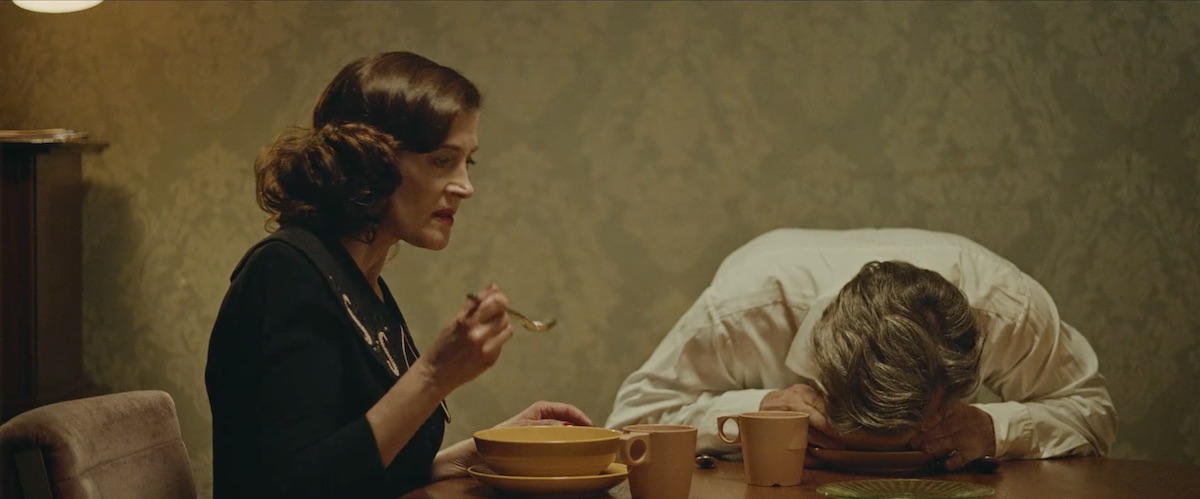
The Killers, Imploding the Mirage
Your meta narrative for The Killers is a multi-layered foray into a dysfunctional family with an undertone of creepy stuff going on and characters that cleverly interweave from their “acting” roles into “real-life” roles. Perhaps you can explain it better!
This is well put! Front-facing and inward-facing dualities of individuals always fascinate me. No different here, and in some way, each principle character battles this in one form or another. This is also projected into the world around them as life blurs between fictional life and reality. The backbone of the story is that love conquers all. Self-love, love from another – both. Particularly for Sammy and for Graham. I wanted it to be an emotional poem of human spirit, integrity and imagination, a story set to an album of music that is as personal as it is operatic.
The synopsis is as follows :
Vegas, 1996. Sammy lives with her mother, a pop singer impersonator and her abusive stepfather.
Emmett lives on the edges of the city with an imagination that outmatches his size. Graham Moore struggles with the choices he has made between former success and the passion for his craft. He leans on the support of his wife and co- star, Nancy Moore, to help him find peace.
The Killers, Imploding the Mirage
What was your creative process for writing the narrative – did you involve The Killers throughout or did you lock yourself away with a blank wall and post-it notes.
Brandon sent me the early demos – the fundamentals of what the songs were going to become. They were so stripped back and raw. Looking back, I wonder if I would have written the script the way it is now, had I heard the final mixes first. In the demos, I could hear a European sound in them. It felt familiar. This is important because it helped me understand Brandon before speaking to him – his search for himself and his life within a kind of music that I find tends to be more vulnerable and intimate.
I then had a phone call with Brandon. He explained that this album was personal, about both his wife and his life, spanning their teenage years to present.
After that, I went away and just wrote. I don’t speak to anyone during the writing process. Until they’ve matured, I feel they are too fragile to share.
What was behind your decision to set Imploding the Mirage in the early 90s?
Specifically to place the world at a time when a teenage Brandon and his wife, Tana, were living in Vegas.
Rich Brian, Sailor
We love it when you take us on a film to South-East Asia, this time to Indonesia for Rich Brian. What did you draw on to write the narrative – did you visualise the shots as you wrote?
The metaphorical and literal homecoming.
It’s hard to explain the feeling of being a stranger to your cultural home. You return as a product of the West, you’ve changed and grown differently. I imagined Brian’s journey through the film is one of reacquaintance.
One aspect I truly love about filmmaking, is that there are many facets to it that can communicate to the audience. You don’t have to rely solely on dialogue and exposition. Visual language is very important to me, I am particular about that. It is present at the beginning of anything I write. It goes hand in hand with the worlds I create and how I want to feel in a particular moment.
A funny detail, but when my family would return to Hong Kong, as a child, I always found it fascinating that there were Fried Chicken restaurants where customers wore plastic gloves to eat the fried chicken and accompanied it with steamed rice. It’s a small detail, but it stuck with me. Honouring it, there are scenes of fast food and baseball being cultural imports present in the film. A calling to where we live now, but also the symptoms of Western post-colonialism and influence in the East.
The final scene is one of my favourites. Brian is stood amongst an incredibly large family portrait, representing both future generations and ancestors. Originally, they were all to face forward as he sings. But when we lined everyone up, I suddenly had a thought, that perhaps it would be more powerful to have everyone but Brian turn their back to us. When he turned away, they all turn their heads forward. To me, that represented that feeling of being alone, and when it was hard to face something yourself, the scores of relatives and family turn to face it with you. Faces that look like you, urging you to continue on your journey.
Rich Brian, Sailor
It’s beautifully shot with rich colours, framing and lighting. Was shooting it all straightforward?
Sylvia Zakhary, my wife and the producer on both The Killers and Rich Brian projects, had seen a film by Blitz Bazawule called Burial of Kojo. It was shot by Michael Cambio Fernandez. She knew his sensitivity and understanding of subjects would be perfect for the Brian project and encouraged me to speak with him. (We would go on to shoot The Killers project together).
He understood my vision for the visual language, the pursuit to make those esoteric, magical intangibles feel so much more visceral.
Cambio talked to me about bringing the knowledge he learnt from Latin American cinema to the table, I conversed back with my knowledge of East Asian cinema, particularly from the influence of Wong Kar-Wai, Tsai Ming-Liang and Edward Yang on myself and the way they navigated their European and Hong Kong/Taiwanese cinematic sensibilities – much like our own personal display of diasporic experiences.
From Rich Brian, Sailor
Like your films you too seem to be half set in America and half in SEA. Please tell us about your heritage and how that influences your story-telling.
My family is Chinese. Chinese people in general tend not to readily share or express personal experiences – sometimes affection. Affection is shown through different actions – in food, in nurturing character, in providing in different ways. There are many stories, like many others, that my family and my parents have been through that even we as a family rarely discuss, though, over the years, we have become much more open and expressive. I was having a conversation the other day with a fellow Chinese-Westerner where we talked about how important it is to highlight this for the next generation. How we would have appreciated knowing there were so many others who can relate, how it is important for all Chinese-Westerners to find ways to communicate these shared experiences with each other and beyond.
I may not talk about my thoughts outwardly to strangers, there are others who can articulate much better in conversation too, but my faith is in my writing and filmmaking and that is my way of communicating these stories and these feelings as they continuously mature and reshape.
From Rich Brian, Sailor
Where are you based now? And where do you call home?
Do you see life as a privilege to be multi-cultured and does it come with its own set of complexities?
Sylvia and I talk about this often. We are based in Los Angeles, but we both do not feel anywhere specifically is “home”. Sylvia’s family lived in several Middle-Eastern countries, often in conflict zones as her parent’s jobs required them to be there, so she grew up with that experience. My family and relative’s historic journeys takes them through several countries looking for a better welfare of life. In a romantic way, we have Hakka blood, so we are inherently nomadic in spirit, our family is spread out across the world.
These sentiments aren’t unique, many first and second generation immigrants don’t have a true feeling of home. When I was younger, I called the feeling anchor-less, and it wasn’t a good thing. It was hard to navigate a balance of assimilating or separating. But as I grew out of my 20s, I began to feel the value and privilege of being so multi- cultured and of how it has shaped the way I look at humanity and the way I communicate.
On set Rich Brian, Sailor
How have you adapted to the turbulence of this year? Has it been a frustrating or creative time? Have you found it emotionally difficult?
It’s a hard question to answer. Everybody has had such a strange year. There is so much uncertainty and that has made us all look at our lives and re-calibrate and focus differently on what matters in some way or another.
At the beginning of the pandemic, Sylvia and I turned her company, the MAMAG Group offices into the prep centre for HALA (Hunger Action LA) and their burgeoning food delivery programme. Many of our friends joined the volunteer programme, either prepping or driving and delivering. We worked with Frank Tamborello over the following several months before the prep operation moved to its more permanent facilities. We continue to remain active in our partnership with HALA.
On the creative side of things, there was a real call to listen to the ideas that really matter. I would be lying if I said creative productivity was consistently fruitful. For me, it waxes and wanes drastically. But that’s natural – we have to be kind to ourselves on that front. We all react differently to what is going on.
On set Rich Brian, Sailor
What’s next?
My focus and attention is now on developing and writing a few select long form projects.
On the short form side, continuing as an independent director, keeping an eye out for the next interesting collaboration.
On set Rich Brian, Sailor
Sing J. Lee website
Sing J. Lee is repped by UTA and Circle of Confusion for film and tv
